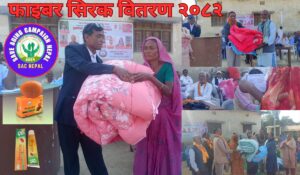Table of Contents
ToggleIntroduction:
Pain Management Strategies for aging are a stage in which a person faces various health challenges, and pain can be a major problem. Success in managing pain in older people is essential, but the task can be challenging. Management of pain in older people is a time-demanding, sensitive, and specialized area of expertise.
In this article, we will focus on effective pain management strategies for the elderly. We’ll look at the differences in the type, assessment, and treatment of pain in older adults, and how we can provide them with optimal health and survival. This article will provide social, physical, and mental guidelines in pain management strategies for older people to help them improve their quality of life and solace.
What are 3 different types of pain management?
Pain management strategies for the elderly may vary depending on individual needs and the nature of pain. Here are three different types of pain management measures that are commonly used for older adults:
- Pharmacological pain management: In this pain management approach, medicines are used to reduce the pain. This may include over-the-counter medications such as acetaminophen or ibuprofen, as well as prescription medications such as opiates, NSAIDs, or muscle relaxants. Pharmacological pain management strategies should be carefully monitored by healthcare professionals to ensure safety and efficacy, especially for older individuals who may be more sensitive to the side effects of medications.
- Non-pharmacological pain management: Non-pharmacological methods are used to handle pain without drugs. These measures may include exercise, stretching, or massage, as well as techniques such as acupuncture, chiropractic care, hot or cold therapy, and TENS. Non-pharmacological measures may be particularly appropriate for older individuals who want to reduce medication use or reduce negative effects.
- Mental and behavioral pain management: This measure considers the psychological and emotional aspects of pain, considering pain perception of emotion, stress, and tolerance. Psychological and behavioral interventions may include cognitive-behavioral therapy (CBT), relaxation techniques, meditation, biofeedback, or counseling to help older people deal with pain-related anxiety, depression, or imbalance. These measures are usually taken over a long time.
Pain Management Strategies

I. Understanding Pain in Seniors
Aging is a stage in which a person faces various health challenges, and pain can be a major problem. It is important to understand pain in older people so that we can manage it properly.
The main causes of pain in older people can be atmospheric changes, loss of sensitivity, and physical problems. With increasing age, the risk of diseases like arthritis, chronic pain, neuropathic pain, and cancer increases.
Appropriate and validated tools should be used to assess pain in older people. Various techniques such as sample questioning, sampling, and statistical evaluation techniques are appropriate.
To properly assess the pain of the elderly, we must communicate with them, understand their needs, and empathize with them. Give them time to share their problems so that we can provide them with appropriate treatment.
II. Assessment of Pain Management Strategies

It is important to evaluate pain in older people so that we can properly understand their pain and provide them with appropriate treatment. Various techniques are used to evaluate pain in the elderly.
- Sample Questioning: It is important to question older people about their pain. They should take the time to provide accurate and detailed information about their pain.
- Sampling: Sampling from older persons can be a good way to evaluate the level of pain. This helps them understand the length of time they are waiting for their pain, the extent of their pain, and the type of pain they are experiencing.
- Constitutional assessment techniques: Constitutional assessment techniques are also appropriate for evaluating pain in older persons. It measures various parameters such as the severity of pain, size of pain, and duration of pain.
When evaluating the pain of older persons, we must act with sensitivity and empathy. It is important to listen to them and understand their experience so that we can help them in the right way.
III. Non-Pharmacological Pain Management Strategies
In addition to pharmacologic treatments, non-pharmacologic pain management strategies can make an important contribution to managing pain in older people. This approach is a group of different techniques to reduce pain without the use of drugs.
- Physical exercise: Physical exercise programs such as exercise, yoga, tai chi, and pilates can help reduce pain for older people. This remedy may also reduce problems such as stability, tolerance, and potentially obesity.
- Physical therapy: Physical therapy techniques include massage, therapeutic heat, and Aquapathetics. These techniques can help reduce pain and may help reduce physical stress.
- Mental techniques: Meditation, pranayama, and relaxation techniques can help reduce pain. These techniques can help reduce mental stress and improve well-being.
- Communication and support: Personal support, companionship from family and friends, and connecting with a support community can also be important in managing pain.
By using non-pharmacologic Pain Management Strategies measures, older people can get relief from pain and improve their lifestyle.
IV. Pharmacological Pain Management Strategies
Pharmacological measures are an important means of managing pain in older people. Pharmacological measures may be necessary, especially for older people who are not able to get help from medical and non-medical measures. The option of pain treatment for older persons should be chosen very carefully so that they do not have to face the associated risks and side effects.
- Use of medications: For older people, different categories of medications may be used for pain, such as paracetamol, acetaminophen, non-steroidal anti-inflammatory drugs (NSAIDs), or opiate medications. It is important to follow the doctor’s advice and guidelines.
- Medication Precautions: For older people, it is extremely important to follow the correct dosage of medications. Using more and more drugs can be unfortunate in real and perceived contexts. A doctor should be consulted about the possible risks and side effects associated with the medicine.
- Controlled monitoring: Every older person should pay attention to possible drug-related interactions and, if necessary, be monitored regularly.
Pharmacological pain management Strategies options for older people should be used in consultation with the physician and should be selected based on their health condition and experience.
V. Multidisciplinary Approaches to Pain Management Strategies for Seniors
A multidisciplinary approach to managing pain in older people may prove successful, combining various medical and non-medical interventions. This approach involves the collaboration of experts from many different fields, who work together to effectively manage the pain of older people.
- Collaboration of medical specialists: This involves a group of medical specialists such as neurologists, rehabilitation doctors, the patient’s physician, and general medical specialists.
- Physiotherapy and occupational therapy: Physiotherapy and occupational therapy can help older people improve their physical condition, by using physical exercises and materials to reduce their pain.
- Psychological support: Psychological support can provide mental and spiritual support to people struggling with pain, increasing their balance and self-confidence.
- Diet and nutrition advice: Diet-related problems can be resolved with the right diet and nutrition by consulting diet and nutrition experts, which can help in reducing the pain.
- Social workers and counselors: Social workers and counselors can help older people connect with family and society, which is important in managing their pain.
The combined efforts of all these specialists provide holistic care and support to the elderly, allowing them to manage their pain and improve their quality of life.
VI. Psychosocial Support and Palliative Care for Seniors

Psycho-social support and palliative care is an important means for older persons to provide them with help and support in their last days. This is especially important for individuals who are being affected by serious or undiagnosed diseases and for whom there is no cure.
- Mental Support: It is important to provide mental support to older persons to help them address their emotional balance. Mental support can help them with loneliness, fear, and intolerance.
- Social support: Social support can help older individuals maintain relationships with family and society. This can provide them with the support, affection, and understanding they need.
- Palliative Care: Palliative care helps older people control pain, support their daily activities, and provide relief and comfort in their final days. Its main objective is to ensure their quality of life.
- Family Support: Family support helps older persons maintain relationships with their family members. This can help them feel like more empathetic peers.
Psycho-social support and palliative care should be available to older persons so that they can receive a high level of care and support. It plays an important role in maintaining their spiritual and emotional balance and provides them comfort and respect during their last moments.
VII. Promoting Self-Management and Empowerment for Seniors
It is important to promote self-management and empowerment for older persons so that they can manage their health and lives. It gives them the ability to understand their health condition, choose treatment, and actively manage it themselves.
- Awareness: The first step in the process of self-management is awareness. Older people should receive accurate information about their health condition, potential problems, and treatment options.
- Self-Advocacy: The next step in self-management is self-advocacy. Older persons should be self-motivated to actively participate in managing their health conditions effectively.
- Self-Management Skills: To improve self-management skills, older persons should be encouraged to incorporate health writing, self-measurement, and self-wellness programs.
- Organizational support: Older persons should connect with healthcare providers, community organizations, and self-help groups to provide organizational support.
- Independence: The main goal of self-management is to help older people achieve independence so that they can take control of their own lives.
The above actions should be adopted to enable older persons to achieve self-management and empowerment capabilities. This allows them to enjoy more control and freedom in their lives.
Conclusion: Pain Management Strategies
Most of the strategies for effective pain management Strategies are very important to understand for a prosperous old age. It is a field of constant change, taking into account the latest science, technology, and human-related research and advancements. Continuing to incorporate advancements in pain management strategies for older people can help ensure them a better quality of life.
Following good pain management strategies allows older people to have higher levels of social, emotional, and physical well-being. They can be made more independent and capable so that they can take control of their own lives.
Thus, effective pain management strategies for older people help them adjust to daily routines, improve their quality of life, and make them more independent and capable. Therefore, we need to encourage appropriate and supportive pain management Strategies for older persons to help them lead daily life in a more positive and balanced manner.
You May Also Read:
Optimal Health and Fitness for Seniors
Medical Services for Senior Citizens: Enhancing Quality of Life in Later Years
Senior Citizens: Facing the Challenges of Aging
Physical Therapy Equipment Insights: Elevating Wellness with the Latest Advancements
How to Plan for Old Age Care part-1
FAQs
The number of pain increases in older people, and this can affect their quality of life. Good pain management measures provide them with comfort and solutions.
The most effective pain management measures include drug therapy, avoidance of unnecessary medications, physiotherapy, psychological support, and self-management skills.
Yes, older people may need multiple drug treatments to reduce pain, which may include paracetamol, NSAIDs, and opiate medications.
No, elderly people should avoid unnecessary medicines as they can cause more harm to their health.
The best pain management tips for older people can be many, but here are some of the main ones:
- Non-pharmacological pain management: This approach uses a variety of techniques from physical therapy, therapeutics, and pedagogy. This may include yoga, massage, physiotherapy, chiropractic, and acupuncture.
- Mental and behavioral pain management: Mental support, meditation, yoga, and cognitive-behavioral therapy may be recommended by medical experts to determine coping with pain.
- Pharmacological pain management: Estimated by a specialist doctor and can be used with experimental drugs and over-the-counter medications.




